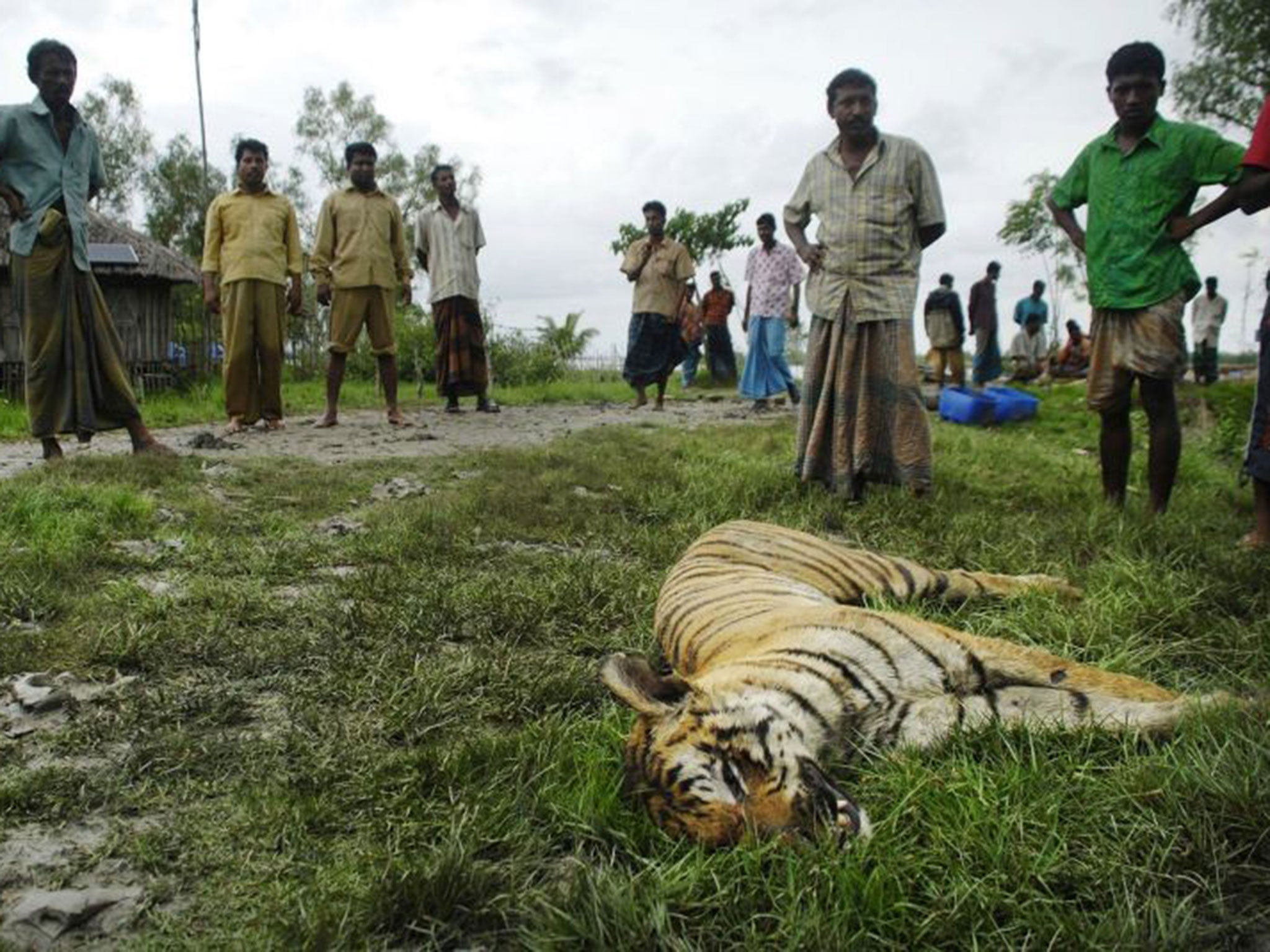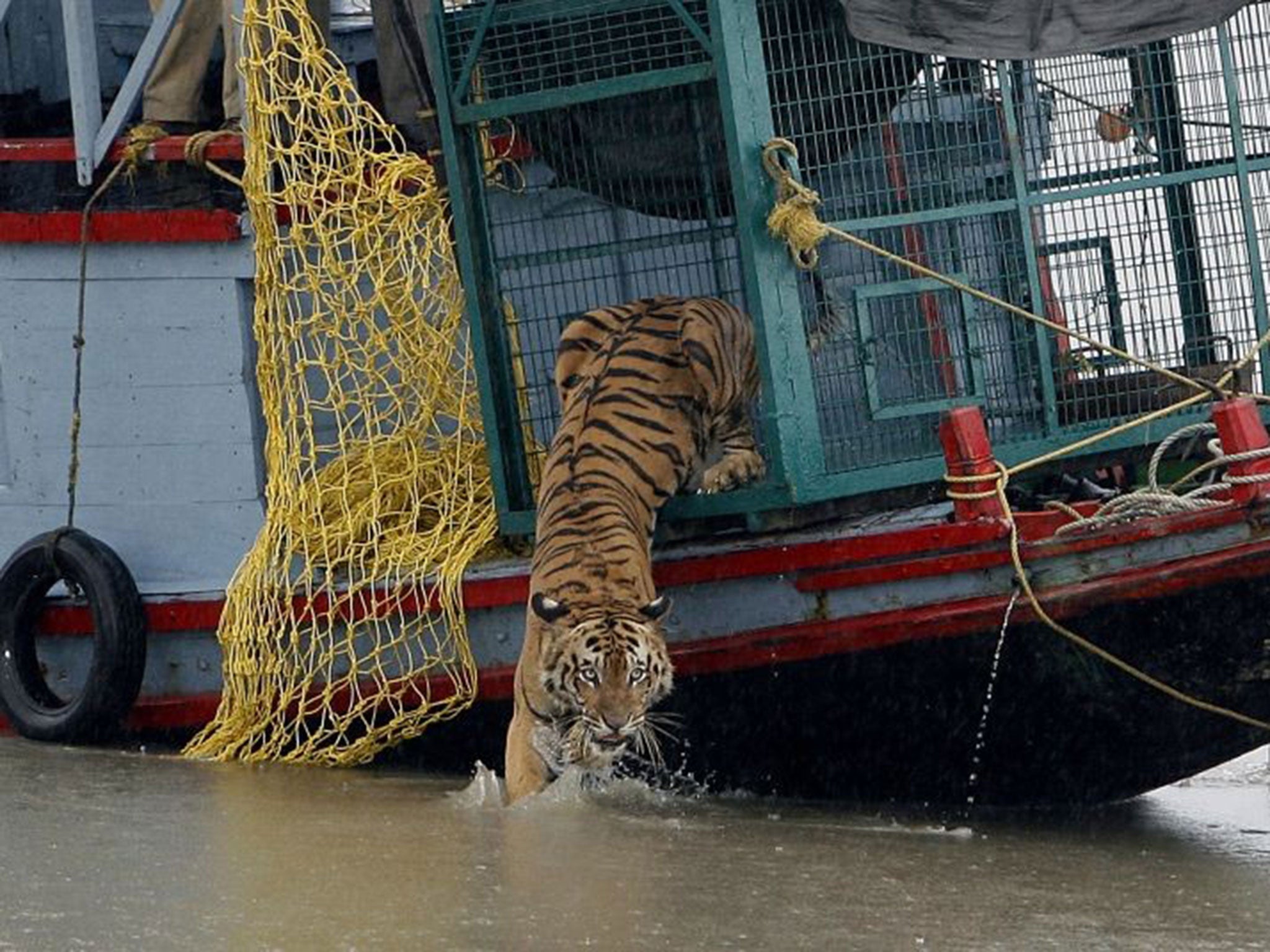Save the tiger: Learning to live with dangerous neighbours
Even in the face of deadly attacks, the villagers of the Sundarbans realise the importance of their tigers

Your support helps us to tell the story
From reproductive rights to climate change to Big Tech, The Independent is on the ground when the story is developing. Whether it's investigating the financials of Elon Musk's pro-Trump PAC or producing our latest documentary, 'The A Word', which shines a light on the American women fighting for reproductive rights, we know how important it is to parse out the facts from the messaging.
At such a critical moment in US history, we need reporters on the ground. Your donation allows us to keep sending journalists to speak to both sides of the story.
The Independent is trusted by Americans across the entire political spectrum. And unlike many other quality news outlets, we choose not to lock Americans out of our reporting and analysis with paywalls. We believe quality journalism should be available to everyone, paid for by those who can afford it.
Your support makes all the difference.Another person is lost to the Royal Bengal tigers of the Sundarbans mangrove forests, straddling India and Bangladesh, almost every month. It is the only region in the world where humans are routinely killed by wild cats.
"Two more men were killed last month – one on the 11th of July and the other on the 26th. In both cases, they went very close to the jungle to fish and a tiger attacked and killed them," says Anil Mistry, 48, a resident of the village of Bali, in the Indian portion of the Sundarbans. "It's not uncommon for people to be killed on the river but more often it happens when they venture deep into the forest to collect firewood, crabs or honey."
Joseph Vattakaven, of WWF-India, says: "The Sundarbans is a unique habitat that's very harsh for tigers and people. These conditions leave the tigers very little prey – mainly spotted deer and wild boar – and more than anywhere else in the world they prey on human beings."
Nobody knows how many people have died in the hundreds of villages that lie scattered across the Sundarbans, a maze of swamp, islands and mangrove forests described by Amitav Ghosh, in his novel The Hungry Tide, as "the trailing threads of India's fabric, the ragged fringe of her sari".
Official estimates are sketchy and are generally thought to greatly underestimate the reality because so many of those killed simply go missing. Often the victims are there illegally and relatives fear a fine or the loss of their fishing permit.

In recent years, tigers and humans have been increasingly thrown together, as climate change combines with years of forest subsistence to put resources under increasing pressure. Fish catches are declining, rivers are silting up, cyclones are becoming more frequent and intense, while rising sea levels result in less fresh water, more floods and faster rates of erosion.
There is a theory that the tigers of the Sundarbans are more aggressive than elsewhere because the water in this coastal area is more salty, putting them in a state of discomfort – but most experts believe this to be a myth.
Meanwhile, dwindling resources are forcing communities to go deeper into the "core" of the forests to collect honey, fish, shrimps, crabs and wood for their boats and homes. This makes them more vulnerable to tiger attacks, while the tigers are forced to come out of the forest because they are finding less prey.
Belinda Wright, a tiger conservationist and founder of the Wildlife Protection Society of India, who also lives in Bali village, says: "You can't walk through the forest. You have to crawl – human beings become four-legged animals and so the tigers treat you like one of their prey. Over the years people have become completely dependent on the mangrove. This is one of the most impoverished areas in India; there are no roads, no electricity, and only minimal health care facilities."
The tigers have become conditioned to eat humans, Mr Vattakaven says, and because they are so deep in the forest no one can see them and the tides take away the remains.
"The tigers have had a massive impact on villagers' lives. Just to know that after darkness you could get killed – that changes the mindscape," he adds. "It's always there in the background. Whenever someone goes to fish or collect honey they stage an elaborate farewell because it might be their last trip. People pray for their safety.
"Everyone knows someone who has been killed by a tiger – every village has lost at least one person. And on top of the deaths there are many that have been marked, bitten, scratched – it is common for people to show their wounds."
Despite the trauma inflicted on the victims and their families, many insist that they do not hate the animals. Instead, they are seen as the forest's protector, especially against the threat of logging.
Ms Wright has also noticed a tendency among villagers to appreciate the tiger's place in the larger scheme of things. She remembers meeting the father of Rupali Bowlia, a 14-year-old schoolgirl who was attacked and killed by a tiger in 2004 as she sat behind her family's mud house doing her homework.
"A couple of years later I was astonished to see her father, Bimal Bowlia, attending one of our gatherings to celebrate wildlife week. He told me: 'We need to understand and respect what's out there – the sky, the jungle, and even [the tiger] – if we are to prosper and be safe," she says.
There is a strong sense among those in the Sundarbans that the death-toll has fallen significantly this decade, at least in the Indian quarter. Mr Vattakaven puts this down to an ongoing project to build nylon fences around the forest to contain the tigers, and tightening restrictions on people going deep into the forest.
Other measures have been tried with less success, he says, including electrified "human" dummies on boats. The idea was that the tiger would attack, get an electric shock and associate that feeling with humans, making them less likely to strike again.

"I'm not sure that one worked," says Mr Vattakaven. "But the nylon fences and increased restrictions on entering the forest are helping bring down numbers. The fence is primarily meant to keep tigers in the forest but it also acts as a physical and psychological barrier to people going in."
But there is still much more to be done. Only a few villages have streetlights – a significant deterrent for tigers who much prefer the dark – and more fences need to be built. There also needs to be more enforcement of laws preventing people going into the forest core and an increase in people patrolling the perimeter, adds Mr Vattakaven.
Most difficult of all, people need to be made less dependent on the forest. New jobs need to be created, for example by developing tourism in the area, he says. But he insists that for most, moving away from the Sundarbans isn't an option.
"When you've been born with the idea that tigers are there you get used to a certain life. People love the place. It's a unique habitat and rich in culture. People are very passionate about the area so they wouldn't move unless they had to," he says.
How to help:
Text: TIGER 70060 to make a £3 donation
Telephone: 0844 7360036
To adopt a tiger: bit.ly/WWFAdopt
To donate to WWF Russia: wwf.org.uk/protecttigers
This is a charity donation service. Texts cost £3 plus one message at your standard network rate (age 16+; UK mobiles only). The WWF will receive 100 per cent of your £3 gift. The WWF may contact you again in future. If you would prefer it not to call, please text NOCALL WWF to 70060. If you would prefer not to receive SMS messages from the WWF, please text NOSMS WWF to 70060. If you wish to discuss a mobile payment call 0203 282 7863. Except for the Adopt a Tiger programme, donations made through the provided links and telephone number will go towards the WWF’s tiger projects in the Russian far east. For more details, visit wwf.org.uk/tigerterms. WWF UK, charity registered in England, number 1081247, and in Scotland, number SC039593.
Join our commenting forum
Join thought-provoking conversations, follow other Independent readers and see their replies
Comments